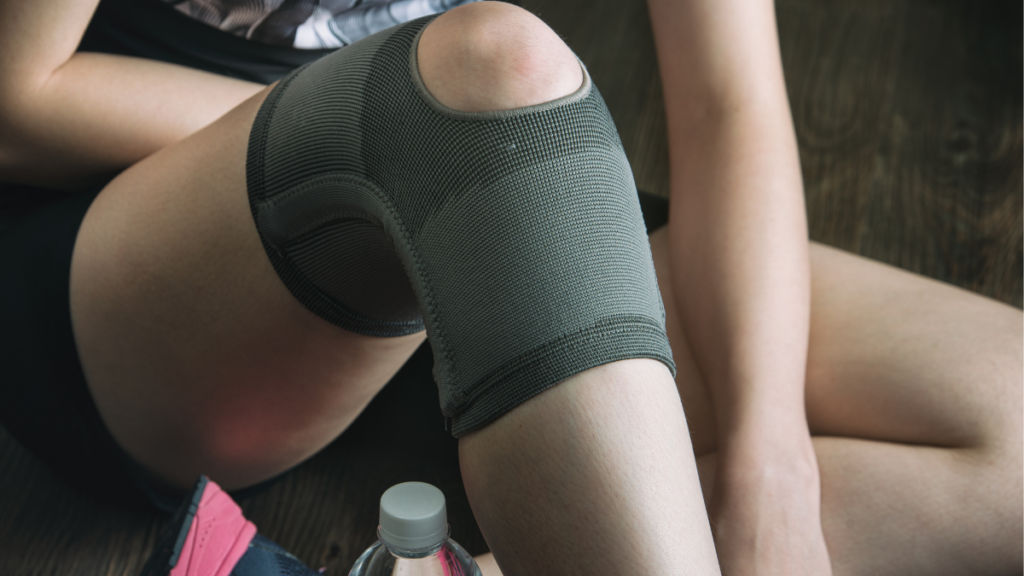Whether you began a couch to 5k exercise program or you are a long-time veteran runner with several ultra-marathons under your belt, knee pain does not have to keep you from living your best life.
Maybe you went on a run this week and you felt pain in the front of your knee. Being new to running you thought, “Well, this is just what running feels like… right ?” Or maybe you decided to take the stairs at work after sitting at your boss’s impromptu two-hour meeting and discover nagging pain halfway down a flight of stairs on the way back to your office.
Runner’s knee does not just happen to runners, contrary to its nickname. It is actually a phenomenon better known in the clinic as Patellofemoral Pain Syndrome (PFPS). It most often occurs in people engaging in high levels of activity or those who increase their levels of activity suddenly. According to research, the highest rate of injury occurs in females, teenagers, and active young adults. PFPS is heavily researched in the military population as it affects active people most.
But… it does seem to happen to runner’s quite often. Running is a repetitive sport and with each step in a stride, loads are forced through the leg that is on the ground from the foot all the way up to the low back.
PFPS is aggravated by activities that overload the quadriceps and patellar tendon. Movements and activities that require deep knee bending like squatting, climbing stairs or activities with repetitive and resisted knee extension like running, increase loads and forces through the quadriceps and patellar tendon.
This pain is usually worse or more likely to flare up after bouts of prolonged sitting.
Okay, but if movement and running are good for you, how and why does this even happen?
First, let’s get oriented with the knee.
The knee joint is actually the largest synovial joint in the body. There are two joints in this area:
1. The Tibiofemoral joint (what we think of as the knee)
2. The Patellofemoral joint (what we think of as the knee-cap).
The patellofemoral joint consists of a V-shaped trench that sits in the front of the knee called the trochlear groove of the femur. The patella rests here and its purpose is to allow the quadriceps tendon to glide up and down while the knee bends and extends without irritating the tendons or the patella.
Now that we understand the anatomy, we can talk about some of the reported contributing factors of PFPS. There is a recurring theme in the research with overuse, structural alignment, muscle tightness, muscle weakness, and overly flat feet as the most common risk factors for PFPS.
Two things that all of these factors have in common is that they result in…
1. Excessive pressure from the femur from tightly wound or weak quadriceps muscles
2. Excessive patellar tracking (often laterally)
Both of these mechanisms result in significant and repetitive irritation and inflammation around the patella.
Back in the day, PFPS was classified as an overuse injury where the more you moved the worse off you were. Recent studies challenge this notion, suggesting quite the opposite—that undertraining rather than overuse could be a greater risk factor for pain.
“Contemporary thinking in relation to training loads and injury risk challenges the idea that PFP is simply an overuse injury, with evidence suggesting that under-training may be a risk factor for an increase in injury risk in athletes [88]. Exposure to appropriate training loads and periodization, without ‘spikes’ in training, is thought to be one method of risk management.1”
As the research suggests, managing training loads could be a more appropriate way to manage and prevent PFPS than just rest alone. Just walking on level ground along places forces equal to half of your body weight through the patellofemoral joint. A more taxing activity like climbing stairs adds about 3-4x your body weight. Running adds forces of about 5-6x your body weight3.
So where do we go from here ?
If you already have pain in your knees when you run, the first and best thing to do is to seek out professional and individualized help from a Medical Doctor and/or Doctor of Physical Therapy. These professionals will be able to explore the root cause of your pain and put you on the right track to get back to running.
If you do not currently have chronic or consistent knee pain, adding a strengthening and mobility component to your current exercise routine will help decrease the risk factors for PFPS. In addition, managing your activity load to avoid “spikes” in training will decrease the risk for anterior knee pain.
If you are a member of Yes.Fit. there are various resources available for you to begin your strengthening routine. Head on over to the app and check out the Exercises tab to begin training your core and lower body and jumpstart your running journey safely!
Alicia Bornemann PT, DPT, SFMAc, GRASTONc
References
1. Smith BE, Selfe J, Thacker D, et al. Incidence and prevalence of patellofemoral pain: A systematic review and meta-analysis. PLoS One. 2018;13(1):e0190892. Published 2018 Jan 11. doi:10.1371/journal.pone.0190892
2. Mulcahey MK, Hettrich CM, Liechti D. Patellofemoral Pain Syndrome. American Academy of Orthopedic Surgeons. https://orthoinfo.aaos.org/en/diseases–conditions/patellofemoral-pain-syndrome/. Published October 2020.
3. Flynn TW, Soutas-Little RW. Patellofemoral joint compressive forces in forward and backward running. Journal of Orthopaedic & Sports Physical Therapy. 1995;21(5):277-282. doi:10.2519/jospt.1995.21.5.277

